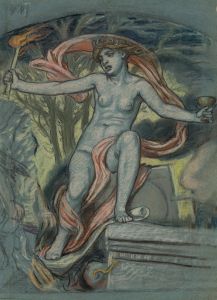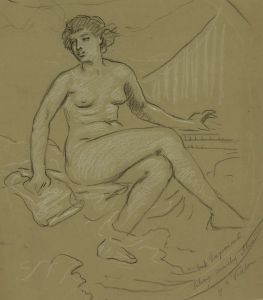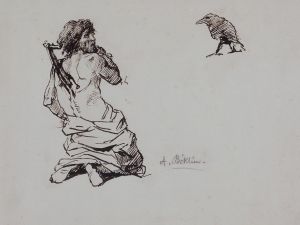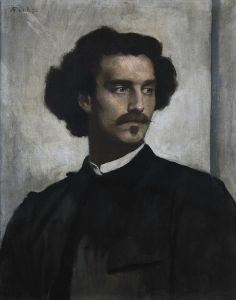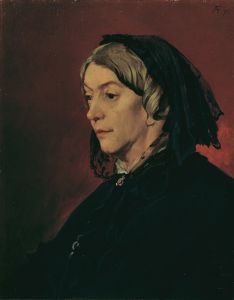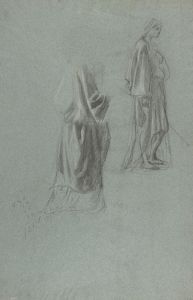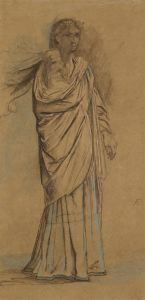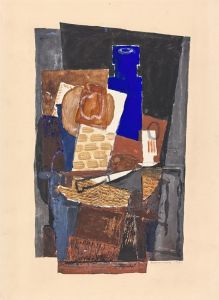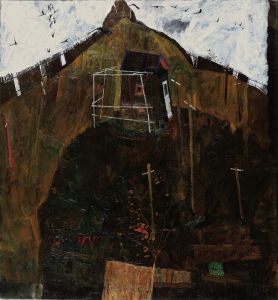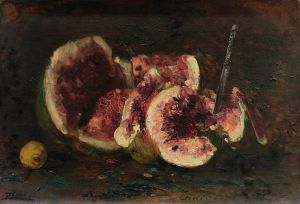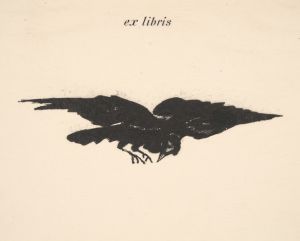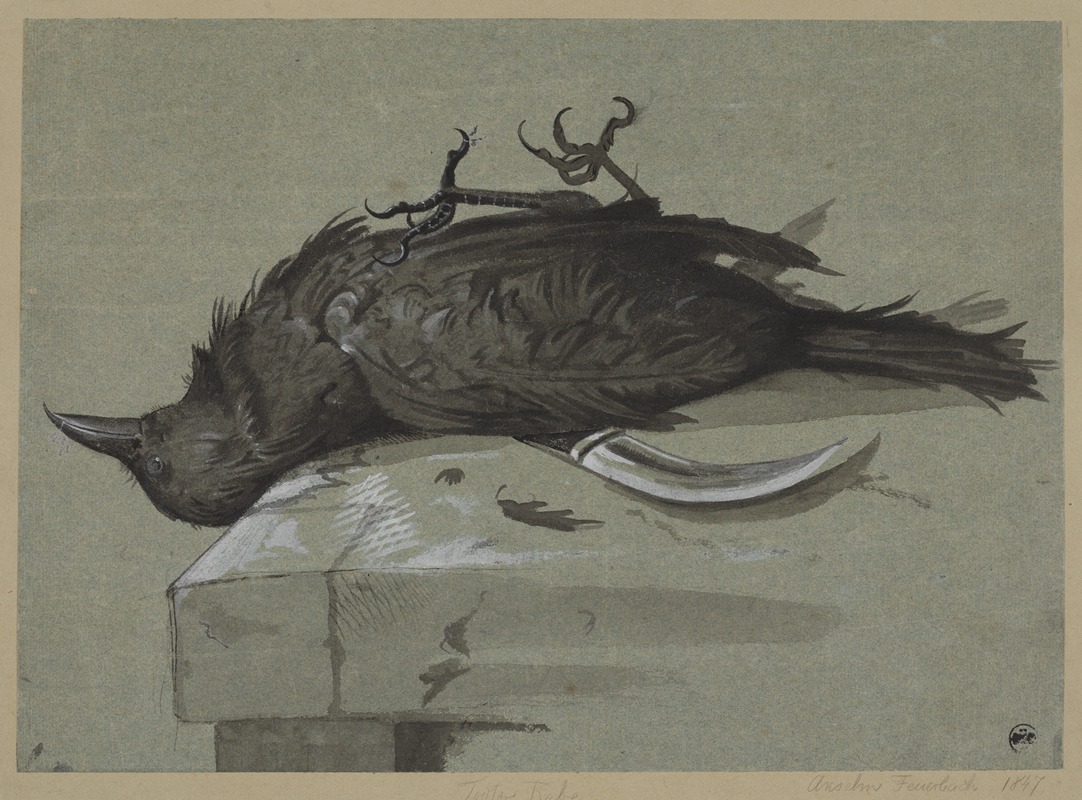
Toter Rabe, über einem Messer auf einem Steintisch liegend
A hand-painted replica of Anselm Feuerbach’s masterpiece Toter Rabe, über einem Messer auf einem Steintisch liegend, meticulously crafted by professional artists to capture the true essence of the original. Each piece is created with museum-quality canvas and rare mineral pigments, carefully painted by experienced artists with delicate brushstrokes and rich, layered colors to perfectly recreate the texture of the original artwork. Unlike machine-printed reproductions, this hand-painted version brings the painting to life, infused with the artist’s emotions and skill in every stroke. Whether for personal collection or home decoration, it instantly elevates the artistic atmosphere of any space.
Anselm Feuerbach was a prominent German painter of the 19th century, known for his classical style and historical subjects. One of his lesser-known works is "Toter Rabe, über einem Messer auf einem Steintisch liegend," which translates to "Dead Raven, Lying on a Knife on a Stone Table." This painting reflects Feuerbach's interest in symbolism and his ability to convey complex themes through simple compositions.
Feuerbach was born on September 12, 1829, in Speyer, Germany, and he was part of a family with a strong intellectual background. His father, Joseph Anselm Feuerbach, was a well-known archaeologist, which may have influenced Anselm's interest in classical themes and subjects. Feuerbach studied at various art academies, including those in Düsseldorf, Munich, and Paris, where he was exposed to different artistic movements and techniques.
The painting "Toter Rabe, über einem Messer auf einem Steintisch liegend" is an example of Feuerbach's ability to create a narrative with minimal elements. The composition is stark and simple, featuring a dead raven placed on a stone table with a knife. The choice of objects in the painting could suggest themes of mortality, violence, or sacrifice, though Feuerbach's exact intentions remain a subject of interpretation.
Feuerbach's style is characterized by a classical approach, often drawing inspiration from ancient history and mythology. He was part of the German Classicism movement, which sought to revive the ideals of beauty and harmony found in ancient Greek and Roman art. His works often feature a subdued color palette and a focus on form and composition, which can also be seen in "Toter Rabe."
Throughout his career, Feuerbach was influenced by his travels and studies in Italy, where he spent a significant amount of time. The Italian Renaissance and the works of artists like Titian and Raphael had a profound impact on his artistic development. This influence is evident in his attention to detail and the serene, balanced compositions of his paintings.
Feuerbach's work was well-regarded during his lifetime, and he held a professorship at the Academy of Fine Arts in Vienna. However, he often felt underappreciated compared to his contemporaries, such as Hans Makart. Despite this, his work has gained recognition posthumously, and he is now considered one of the leading figures of 19th-century German art.
"Toter Rabe, über einem Messer auf einem Steintisch liegend" may not be as famous as some of Feuerbach's other works, such as his depictions of classical myths and figures, but it remains an intriguing piece that showcases his skill in creating evocative imagery with minimal elements. The painting invites viewers to ponder its meaning and the symbolism behind the chosen objects, reflecting Feuerbach's ability to engage with complex themes through his art.
Feuerbach passed away on January 4, 1880, in Venice, Italy. His legacy continues to be celebrated in art history, and his works are housed in various museums and collections, serving as a testament to his contribution to the art world.





